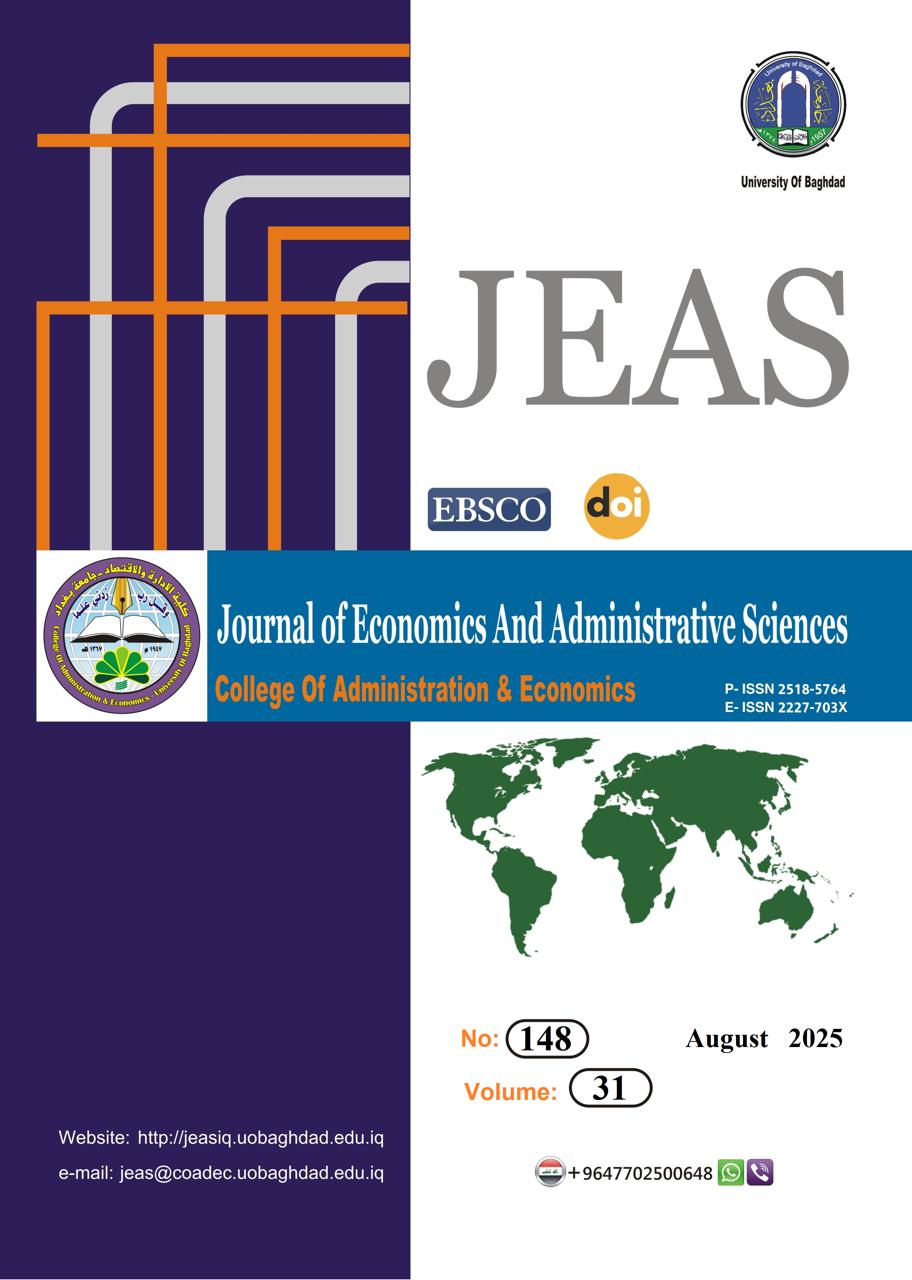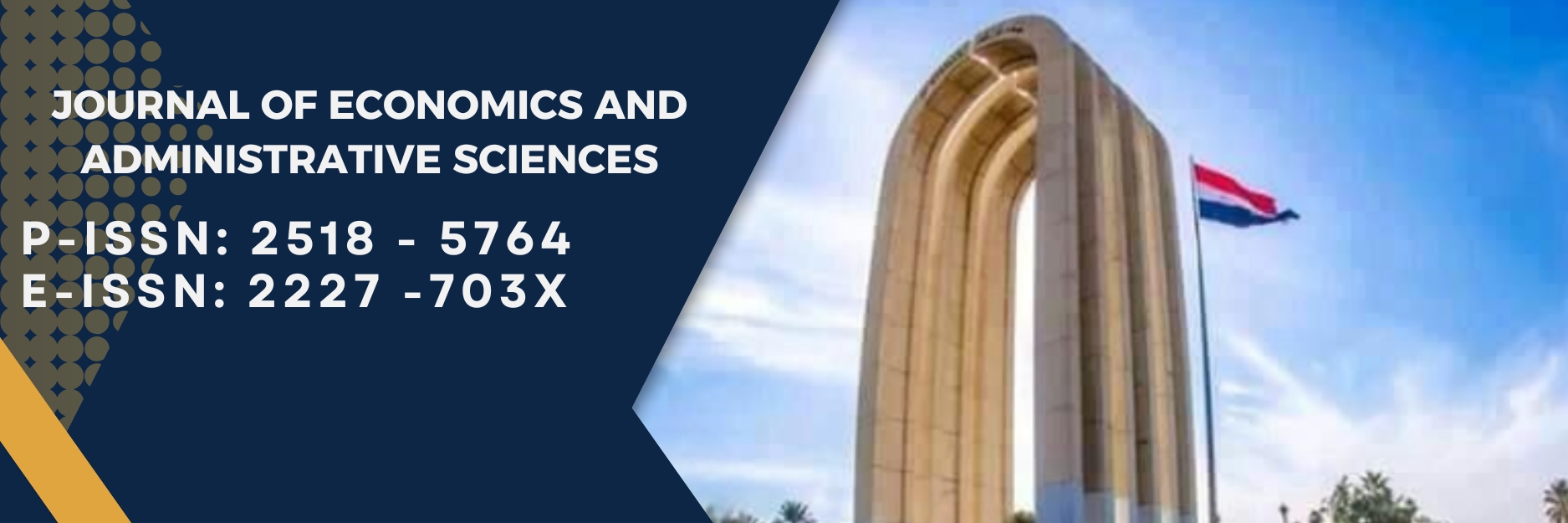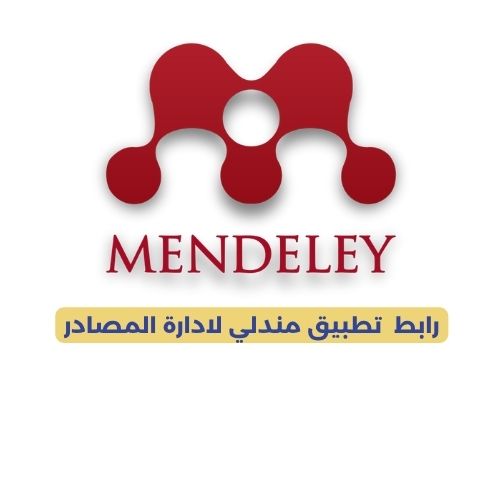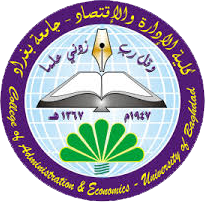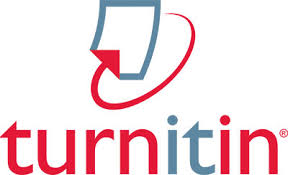Predicting stock market indicators using a hybrid model (ARIMA - GARCH): An analytical study of some Gulf financial market indicators
DOI:
https://doi.org/10.33095/tkrnay54Keywords:
Hybrid Model, Prediction, Financial Markets, ARIMA, GARCH.Abstract
Purpose: The research aims to compare the results of forecasting financial market indicators in the Arabian Gulf using the hybrid ARIMA-GARCH model. This research argues for the efficiency of traditional standard models in forecasting for relatively long periods.
Methodology: The hybridization technique initially depends on the selection of the best autoregressive integrated moving average model for prediction according to the automatic selection function for the proposed models that achieve the best statistical conditions. The models chosen in the previous step represent the inputs for using the (1,1,1) GARCH model for the prediction. Both models predict financial market indicators from outside the sample for 12 months. Finally, the actual closing points of the market indicators and the prediction results of the two models were compared.
Findings: The research concludes that ARIMA models are effective and efficient in predicting the indices of the Kuwait Stock Exchange and the Manama Stock Exchange. By contrast, the GARCH model outperformed the ARIMA model in predicting the Saudi Stock Exchange index and achieved excellent results. The prediction results for the Iraqi and Dubai markets did not achieve satisfactory results; however, the results of the comparison by calculating the average square error indicate the superiority of the ARIMA models.
Originality: This study argues the possibility of traditional standard models in predicting financial market indicators for relatively long periods, which is not provided by previous literature that argues the efficiency of artificial intelligence models and confirms that standard models can predict relatively short periods.
Downloads
References
Afeef, M., Ihsan, A., & Zada, H. (2018). Forecasting Stock Prices through Univariate ARIMA Modeling. NUML International Journal of Business & Management ISSN, 13(2), 2410–5392.
Afzal, F., Haiying, P., Afzal, F., Mahmood, A., & Ikram, A. (2021). Value-at-risk analysis for measuring stochastic volatility of stock returns: using GARCH-based dynamic conditional correlation model. Sage Open, 11(1).https://doi.org/10.1177/21582440211005758
Ahmed Hamel, A., & Ismael Abdulwahhab, B. (2022). Using a hybrid SARIMA-NARNN Model to Forecast the Numbers of Infected with (COVID-19) in Iraq. Journal of Economics and Administrative Sciences, 28(132), 118–133. https://doi.org/10.33095/jeas.v28i132.2276
Alam, M. Z., Siddikee, M. N., & Masukujjaman, M. (2013). Forecasting Volatility of Stock Indices with ARCH Model. International Journal of Financial Research, 4(2).https://doi.org/10.5430/ijfr.v4n2p126
Alaminos, D., Salas, M. B., & Partal-Ureña, A. (2024). Hybrid ARMA-GARCH-Neural Networks for intraday strategy exploration in high-frequency trading. Pattern Recognition, 148. https://doi.org/10.1016/j.patcog.2023.110139
Arashi, M., & Rounaghi, M. M. (2022). Analysis of market efficiency and fractal feature of NASDAQ stock exchange: Time series modeling and forecasting of stock index using ARMA-GARCH model. Future Business Journal, 8(1), 12. https://doi.org/10.1186/s43093-022-00125-9
Assous, H. F., Al-Rousan, N., Al-Najjar, D., & Al-Najjar, H. (2020). Can international market indices estimate TASI’s movements? The ARIMA model. In Journal of Open Innovation: Technology, Market, and Complexity (Vol. 6, Issue 2, pp. 1–17).https://doi.org/10.3390/joitmc6020027
Burhan, B., & Ahmmed Mohammed , F. (2024). A Hybrid Model for Financial Forecasting Based on Maximal Overlap Discrete Wavelet Transform; Evidence from Chinese Exchange Rates. Journal of Economics and Administrative Sciences, 30(142), 476-491. https://doi.org/10.33095/hevp1268
Cao, X., & Zhao, Z. (2022). Research on stock index forecasting based on ARIMA-GARCH and SVM mixed model. In Highlights in Science, Engineering and Technology (Vol. 4, pp. 40–46). https://doi.org/10.54097/hset.v4i.843
Challa, M. L., Malepati, V., & Kolusu, S. N. R. (2020). S&P BSE Sensex and S&P BSE IT return forecasting using ARIMA. In Financial Innovation (Vol. 6, Issue 1).
https://doi.org/10.1186/s40854-020-00201-5
Dhyani*, B., Kumar, M., Verma, P., & Jain, A. (2020). Stock Market Forecasting Technique using Arima Model. International Journal of Recent Technology and Engineering (IJRTE), 8(6), 2694–2697. https://doi.org/10.35940/ijrte.f8405.038620Dinardi, F. B. (2020). Forecasting the stock market using ARIMA and ARCH/GARCH approaches. https://run.unl.pt/handle/10362/109749
Guiao, J. E. (2019). Forecasting Philippine Stock Market Prices Using ARIMA-GARCH Models. In DLSU Research Congress.
H. Yıldırım, & F.V. Bekun. (2023). Predicting volatility of bitcoin returns with ARCH, GARCH and EGARCH models. Future Business Journal, 9(1), 75. https://doi.org/10.1186/s43093-023-00255-8
Hyung Park, M., Nan, D., Kim, Y., & Hyun Kim, J. (2023). CBOE Volatility Index Forecasting under COVID-19: An Integrated BiLSTM-ARIMA-GARCH Model. Computer Systems Science and Engineering, 47(1), 121–134. https://doi.org/10.32604/csse.2023.033247
Ismail, M. T., Audu, B., & Tumala, M. M. (2016a). Comparison of forecasting performance between MODWT-GARCH(1,1) and MODWT-EGARCH(1,1) models: Evidence from African stock markets. Journal of Finance and Data Science, 2(4), 254–264. https://doi.org/10.1016/j.jfds.2017.03.001
Ismail, M. T., Audu, B., & Tumala, M. M. (2016b). Volatility forecasting with the wavelet transformation algorithm GARCH model: Evidence from African stock markets. Journal of Finance and Data Science, 2(2), 125–135. https://doi.org/10.1016/j.jfds.2016.09.002
Kolte, A., Roy, J. K., & Vasa, L. (2023). The impact of unpredictable resource prices and equity volatility in advanced and emerging economies: An econometric and machine learning approach. Resources Policy, 80. https://doi.org/10.1016/j.resourpol.2022.103216
Li, S. (2024). Stock Closing Price Prediction Based on the ARIMA-GARCH Model (pp. 2–23).
Long, W., Gao, J., Bai, K., & Lu, Z. (2024). A hybrid model for stock price prediction based on multi-view heterogeneous data. Financial Innovation, 10(1), 48.https://doi.org/10.1186/s40854-023-00519-w
Lu, L., Lei, Y., Yang, Y., Zheng, H., Wang, W., Meng, Y., Meng, C., & Zha, L. (2023). Assessing nickel sector index volatility based on quantile regression for Garch and Egarch models: Evidence from the Chinese stock market 2018–2022. Resources Policy, 82. https://doi.org/10.1016/j.resourpol.2023.103563
M. Mallikarjuna, & Rao, R. P. (2019). Evaluation of Forecasting Methods from Selected Stock Market Returns. Mallikarjuna and Rao Financial Innovation, 14(4), 20–30.https://doi.org/10.26524/sajet.2024.14.16
Adhikari, M. (2024). Forecasting stock index closing points using ARIMA–GARCH with a rolling data window. International Journal of Scientific Research and Analysis, 6(2), 45-55.
Mashadihasanli, T. (2022). Stock market price forecasting using the ARIMA model: an application to Istanbul, Turkiye. İktisat Politikası Araştırmaları Dergisi, 9(2), 439-454. https://doi.org/10.26650/jepr1056771
Meher, B. K., Hawaldar, I. T., Spulbar, C. M., & Birau, F. R. (2021). Forecasting stock market prices using mixed ARIMA model: A case study of Indian pharmaceutical companies. Investment Management and Financial Innovations, 18(1), 42-54. https://doi.org/10.21511/imfi.18(1).2021.04
Miswan, N. H., Ngatiman, N. A., Hamzah, K., & Zamzamin, Z. Z. (2014). Comparative performance of ARIMA and GARCH models in modelling and forecasting volatility of Malaysia market properties and shares. Applied Mathematical Sciences, 8(140), 7001-7012.
Naik, N., Mohan, B. R., & Jha, R. A. (2020). GARCH-Model Identification based on Performance of Information Criteria. Procedia Computer Science, 171, 1935–1942. https://doi.org/10.1016/j.procs.2020.04.207
Narendra Babu, C., & Eswara Reddy, B. (2015). Prediction of selected Indian stock using a partitioning–interpolation based ARIMA–GARCH model. Applied Computing and Informatics, 11(2), 130–143. https://doi.org/10.1016/j.aci.2014.09.002
Nargunam, R., Wei, W. W., & Anuradha, N. (2021). Investigating seasonality, policy intervention and forecasting in the Indian gold futures market: a comparison based on modeling non-constant variance using two different methods. Financial Innovation, 7(1), 62. https://doi.org/10.1186/s40854-021-00283-9
Rubio, L., Palacio Pinedo, A., Mejía Castaño, A., & Ramos, F. (2023). Forecasting volatility by using wavelet transform, ARIMA and GARCH models. Eurasian Economic Review, 13(3), 803-830. https://doi.org/10.1007/s40822-023-00243-x
Sahiner, M. (2022). Forecasting volatility in Asian financial markets: evidence from recursive and rolling window methods. SN Business & Economics, 2(10).
https://doi.org/10.1007/s43546-022-00329-9
Sharma, P., & Vipul. (2015). Forecasting stock index volatility with GARCH models: international evidence. Studies in Economics and Finance, 32(4), 445–463.
https://doi.org/10.1108/SEF-11-2014-0212
Fraz, T. R. (2024). Forecasting the Stock Market Returns Using nonlinear hybrid GARCH-SETAR model: An Empirical Study of the Pakistani Stock Markets. JISR management and social sciences & economics, 22(1), 31-48.
Wang, H., Song, S., Zhang, G., & Ayantoboc, O. O. (2023). Predicting daily streamflow with a novel multi-regime switching ARIMA-MS-GARCH model. Journal of Hydrology: Regional Studies, 47. https://doi.org/10.1016/j.ejrh.2023.101374
Xing, Y., Yan, C., & Xie, C. C. (2024, July). Predicting nvidia’s next-day stock price: A comparative analysis of lstm, mlp, arima, and arima-garch models. In World Congress in Computer Science, Computer Engineering & Applied Computing (pp. 467-479). Cham: Springer Nature Switzerland.
Xu, Y., Zhang, Y., Liu, P., Zhang, Q., & Zuo, Y. (2024). GAN-Enhanced Nonlinear Fusion Model for Stock Price Prediction. In International Journal of Computational Intelligence Systems (Vol. 17, Issue 1). https://doi.org/10.1007/s44196-023-00394-4
Yamacli, D. S., & Yamacli, S. (2023). Estimation of the unemployment rate in Turkey: A comparison of the ARIMA and machine learning models including Covid-19 pandemic periods. Heliyon, 9(1). https://doi.org/10.1016/j.heliyon.2023.e12796
Yasmin, S., & Moniruzzaman, M. (2024). Forecasting of area, production, and yield of jute in Bangladesh using Box-Jenkins ARIMA model. Journal of Agriculture and Food Research, 16,101203. https://doi.org/10.1016/j.jafr.2024.101203
Yenice, S., & Tekindal, M. A. (2015). Forecasting the Stock Indexes of Fragile Five Countries through Box-Jenkins Methods. In International Journal of Business and Social Science (Vol. 6,Issue 8). www.ijbssnet.com
Zhang, C., & Zhou, X. (2024). Forecasting value-at-risk of crude oil futures using a hybrid ARIMA-SVR-POT model. Heliyon, 10(1). https://doi.org/10.1016/j.heliyon.2023.e23358
Published
Issue
Section
License
Copyright (c) 2025 Journal of Economics and Administrative Sciences

This work is licensed under a Creative Commons Attribution-NonCommercial-NoDerivatives 4.0 International License.
Articles submitted to the journal should not have been published before in their current or substantially similar form or be under consideration for publication with another journal. Please see JEAS originality guidelines for details. Use this in conjunction with the points below about references, before submission i.e. always attribute clearly using either indented text or quote marks as well as making use of the preferred Harvard style of formatting. Authors submitting articles for publication warrant that the work is not an infringement of any existing copyright and will indemnify the publisher against any breach of such warranty. For ease of dissemination and to ensure proper policing of use, papers and contributions become the legal copyright of the publisher unless otherwise agreed.
The editor may make use of Turtitin software for checking the originality of submissions received.
